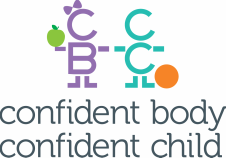ACTIVITy 8: grow, prepare, share
|
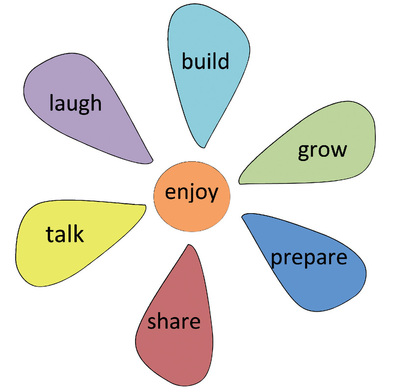
Sharing the experience of growing,
preparing, and sharing fresh and
nutritious foods can positively enhance
a child’s experience of food and eating.
It’s never too early to start and all
activities can be adapted to different
age groups.
Below you will find ways you can grow,
prepare, and share your child’s positive
relationship with food and eating.
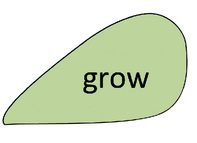
BUILD A HERB GARDEN OR VEGIE PATCH
• Take your child to a nursery and buy some seedlings. Alternatively,
you can keep seeds or stubs from foods (e.g., potato, carrot,
tomato), and plant them directly
• Prepare a patch of garden or suitable pots
• Encourage children to water the seedlings regularly or as needed
• Involve children in picking the herbs, vegetables, or fruit when they are ready
• Talk to your child about the regular food, water, and sun that the seeds need to grow
_ _ _ _ _ _ _ _ _ _ _ _ _ _ _ _ _ _ _ _ _ _ _ _ _ _ _ _ _ _ _ _ _ _ _ _ _
• Take your child to a nursery and buy some seedlings. Alternatively,
you can keep seeds or stubs from foods (e.g., potato, carrot,
tomato), and plant them directly
• Prepare a patch of garden or suitable pots
• Encourage children to water the seedlings regularly or as needed
• Involve children in picking the herbs, vegetables, or fruit when they are ready
• Talk to your child about the regular food, water, and sun that the seeds need to grow
_ _ _ _ _ _ _ _ _ _ _ _ _ _ _ _ _ _ _ _ _ _ _ _ _ _ _ _ _ _ _ _ _ _ _ _ _
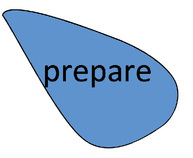
TODDLERS (AGE 2-3)
This age group will need your help but also your time and patience to
master basic food preparation skills. Setting up an activity ahead of
time will help! Be prepared for, and aim not to discourage, mess.
Playing with food can be a vital step for your child to have positive
experiences with eating.
Ideas:
• Put toppings (such as sliced meats or cheese) on a sandwich or crackers
• Stir cool or warm foods in a bowl
• Fill burritos or tacos with meat, grated cheese, and salad.
• Top pizzas with chopped meats, grated cheese, and vegetables
PRESCHOOLERS (AGE 3-5)
This group will likely be more independent and look for more of a challenge but will still need your
help mastering some skills.
Ideas:
• Spread toppings such as vegemite, jam, or honey on toast
• Prepare mixtures (such as muffins) and spoon into pans
• Pack snacks into containers for playtime, outings or kinder
• Encourage children to pay attention to texture and appearance
• Talk about how food changes when cooked (e.g., the texture of pasta from hard to soft)
_ _ _ _ _ _ _ _ _ _ _ _ _ _ _ _ _ _ _ _ _ _ _ _ _ _ _ _ _ _ _ _ _ _ _ _ _
This age group will need your help but also your time and patience to
master basic food preparation skills. Setting up an activity ahead of
time will help! Be prepared for, and aim not to discourage, mess.
Playing with food can be a vital step for your child to have positive
experiences with eating.
Ideas:
• Put toppings (such as sliced meats or cheese) on a sandwich or crackers
• Stir cool or warm foods in a bowl
• Fill burritos or tacos with meat, grated cheese, and salad.
• Top pizzas with chopped meats, grated cheese, and vegetables
PRESCHOOLERS (AGE 3-5)
This group will likely be more independent and look for more of a challenge but will still need your
help mastering some skills.
Ideas:
• Spread toppings such as vegemite, jam, or honey on toast
• Prepare mixtures (such as muffins) and spoon into pans
• Pack snacks into containers for playtime, outings or kinder
• Encourage children to pay attention to texture and appearance
• Talk about how food changes when cooked (e.g., the texture of pasta from hard to soft)
_ _ _ _ _ _ _ _ _ _ _ _ _ _ _ _ _ _ _ _ _ _ _ _ _ _ _ _ _ _ _ _ _ _ _ _ _
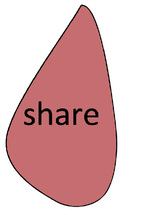
Depending on the age of your child, you could place foods in the centre of
the table for children to help themselves. At this time, it’s fine to provide
respectful guidance but this process aims to support a child to develop an
awareness of portion size, independent eating, self-monitoring, and
appetite awareness.
Tips:
• Create a relaxed environment
• Emphasise the enjoyment of different foods
• Develop regular times for meals and snacks around your daily activities
• Praise your child for appropriate eating behaviour
• Encourage your child to stop eating when they feel satisfied ("how does your tummy feel?")
• Discuss the different foods that make up dishes
the table for children to help themselves. At this time, it’s fine to provide
respectful guidance but this process aims to support a child to develop an
awareness of portion size, independent eating, self-monitoring, and
appetite awareness.
Tips:
• Create a relaxed environment
• Emphasise the enjoyment of different foods
• Develop regular times for meals and snacks around your daily activities
• Praise your child for appropriate eating behaviour
• Encourage your child to stop eating when they feel satisfied ("how does your tummy feel?")
• Discuss the different foods that make up dishes
